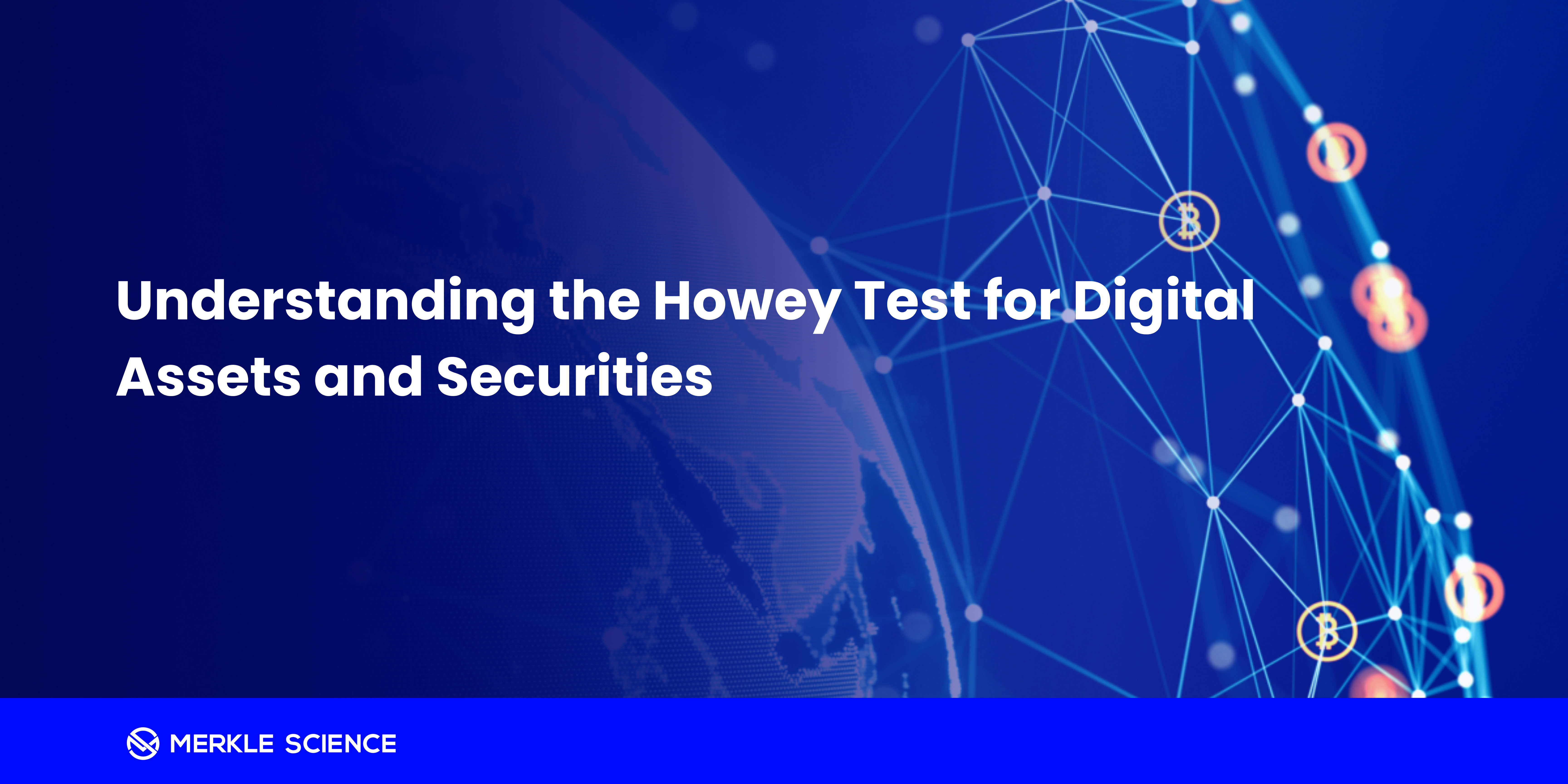Understanding the Howey Test for Digital Assets and Securities

Robert Whitaker

Understanding whether a digital asset qualifies as a security is crucial for companies and investors in the crypto asset space, as it determines the regulatory framework that applies. One of the most critical tools the U.S. Securities and Exchange Commission (SEC) uses for this determination is the Howey Test.
This article will dive into the origins of the Howey Test, explaining its foundational role in securities law, break down its four key criteria, and explore its application to various types of digital assets like Initial Coin Offerings (ICOs), Decentralized Finance (DeFi) projects, and Non-Fungible Tokens (NFTs). By the end of this article, you'll have a comprehensive understanding of how the Howey Test impacts the regulation of digital assets and why it remains a cornerstone of SEC enforcement in the evolving world of blockchain and cryptocurrency.
Origins of the Howey Test
The Howey Test originates from the landmark 1946 Supreme Court case SEC v. W.J. Howey Co., which involved a real estate transaction where the SEC argued that what appeared to be a simple land sale was, in fact, an investment contract.
The case revolved around the Howey Company, which offered tracts of citrus groves in Florida to buyers. Along with the land, buyers were given the option to lease the land back to the Howey Company, which would cultivate, harvest, and sell the produce on behalf of the investors. The investors, who had no expertise in citrus farming, were primarily motivated by the profits they expected from the operation of the groves by the Howey Company. The SEC argued that these transactions were not merely real estate sales but were, in fact, investment contracts. The Supreme Court agreed and established what is now known as the Howey Test.
The Howey Test provides a framework for determining whether certain transactions constitute "investment contracts" and therefore qualify as securities under the Securities Act of 1933. The test is significant because if an asset or transaction is classified as a security, it must comply with strict regulatory requirements, including registration with the SEC and adherence to disclosure obligations designed to protect investors.
The Four Prongs of the Howey Test
The Howey Test establishes four criteria that must all be met for a transaction to be considered an investment contract and, thus, a security:
1. An Investment of Money:This criterion assesses whether there is an investment of money or other valuable assets. The term "money" is broadly interpreted to include not only cash but also other forms of consideration, such as goods or services. In the context of digital assets, this could involve the purchase of tokens or cryptocurrencies with either fiat currency or other digital assets. The key consideration is that the investor commits capital or something of value with the expectation of receiving a return.
2. In a Common Enterprise:The second prong examines whether the investment is part of a "common enterprise." A common enterprise typically involves a situation where the fortunes of the investor are interlinked with those of the promoter or other investors.
There are two main interpretations of common enterprise:
- Horizontal Commonality: This form occurs when the profits of multiple investors are pooled together and shared among them. In digital assets, this might be seen in cases where the success of a token depends on the collective participation of all token holders.
- Vertical Commonality: This form focuses on the relationship between the investor and the promoter, where the investor’s success is directly tied to the efforts or success of the promoter. For digital assets, this could involve the development team behind a cryptocurrency whose efforts are critical to the value and success of the token.
The third criterion is whether the investor has an expectation of profits from the investment. Profits can include dividends, capital appreciation, or other forms of financial return. In the realm of digital assets, this often applies to Initial Coin Offerings (ICOs) and other token sales, where investors buy tokens with the expectation that their value will increase as the underlying project succeeds. If the marketing materials or communications from the issuer suggest that buyers can expect a financial return, this prong of the test is likely satisfied.
4. Derived from the Efforts of Others:The final prong considers whether the profits are expected to come primarily from the efforts of others, typically the promoter or a third party. This aspect of the test is crucial because it distinguishes passive investments, where investors rely on the work of others, from active investments, where investors contribute significant efforts themselves. In the context of digital assets, this criterion often hinges on whether the success of the investment is dependent on the efforts of a central team, such as the developers of a blockchain project, who are responsible for driving the success and value of the token.
If a digital asset meets all four prongs of the Howey Test, it is classified as a security and is therefore subject to the full range of securities regulations, including registration with the SEC, disclosure requirements, and compliance with anti-fraud provisions. The SEC’s framework for 'Investment Contract' analysis emphasizes that the Howey Test applies to any contract, scheme, or transaction, regardless of its traditional characteristics. The SEC guidance underscores that the analysis must consider not only the form and terms of the digital asset but also the circumstances surrounding its offer, sale, or resale, including secondary market transactions.
Application of the Howey Test to Digital Assets
The Howey Test has been extensively applied to determine the regulatory status of digital assets, particularly in the context of Initial Coin Offerings (ICOs), decentralized finance (DeFi) projects, and other blockchain-based innovations.
According to the SEC’s guidance, the Howey Test applies to any contract, scheme, or transaction, regardless of its traditional characteristics. In the realm of digital assets, this has broad implications.
As the digital asset market has evolved, the SEC has increasingly used the Howey Test to assess whether these new financial instruments should be classified as securities.
The SEC has also emphasized a "substance over form" approach to regulating the crypto industry. This approach means the SEC focuses more on the actual economic realities and investor protections associated with crypto assets, rather than their formal classifications or labels. The U.S. regulatory stance claims to be technology-neutral, concentrating on the function of a crypto asset rather than its technical structure or the technology it employs. In other words, securities laws should apply equally to all crypto assets that serve a similar function, regardless of the underlying technology.
- Initial Coin Offerings (ICOs): ICOs have been one of the most scrutinized areas by the SEC, as many of these offerings meet the Howey Test criteria. In an ICO, investors typically purchase tokens with the expectation that the value of these tokens will increase as the project develops. The funds raised are often used by the project team to develop the underlying technology or platform, with investors relying on the team’s efforts to drive success. Given these factors, the SEC has frequently determined that many ICOs involve the sale of unregistered securities.
- Decentralized Finance (DeFi): The application of the Howey Test to DeFi projects has also been a focus of regulatory scrutiny. Many DeFi platforms offer yield farming, staking, or liquidity pool rewards, which might be considered securities if investors are purchasing tokens with the expectation of profits derived from the efforts of the platform’s developers or operators. The decentralized nature of these platforms adds complexity to the analysis, but the SEC’s approach remains rooted in the principles established by the Howey Test.
- Non-Fungible Tokens (NFTs): While most NFTs are considered unique digital collectibles and are not classified as securities, certain NFTs that promise future profit or are tied to a common enterprise may fall under the Howey Test’s purview. For instance, fractionalized NFTs or those that offer a share in profits from the resale or use of the underlying asset may be treated as securities by the SEC.
The SEC’s framework further suggests that even digital assets obtained through "bounty programs" or "airdrops" can meet the "investment of money" prong if they are exchanged for services or other consideration designed to advance the issuer’s economic interests.
Applying the Howey Test to Digital Assets: Challenges and Considerations
The application of the Howey Test to digital assets is not without challenges. The decentralized and often global nature of digital assets complicates the assessment of a "common enterprise" and the "expectation of profits." Furthermore, there is ongoing debate within the industry and among regulators about whether the Howey Test, designed in the 1940s, is the best framework for evaluating modern digital assets. Some argue that a new regulatory paradigm may be needed to more accurately capture the nuances of digital and decentralized financial instruments.
Despite these challenges, the Howey Test remains the SEC’s primary tool for assessing whether digital assets qualify as securities. Companies operating in the digital asset space must be aware of how the Howey Test might apply to their offerings and should seek legal advice to ensure compliance with securities laws.
Conclusion
The Howey Test is a pivotal element in the regulation of digital assets, providing a clear framework for determining whether a particular digital asset qualifies as a security. As the digital asset market continues to grow, understanding how the Howey Test applies to various types of digital assets—such as ICOs, DeFi projects, and NFTs—is essential for compliance and avoiding regulatory pitfalls.
For digital asset companies, navigating these complex regulatory requirements can be challenging. Merkle Science offers advanced compliance solutions to help businesses stay ahead of regulatory developments and ensure that their operations comply with the latest securities laws. Visit Merkle Science to learn more about how our products can support your compliance needs in the evolving digital asset landscape.


